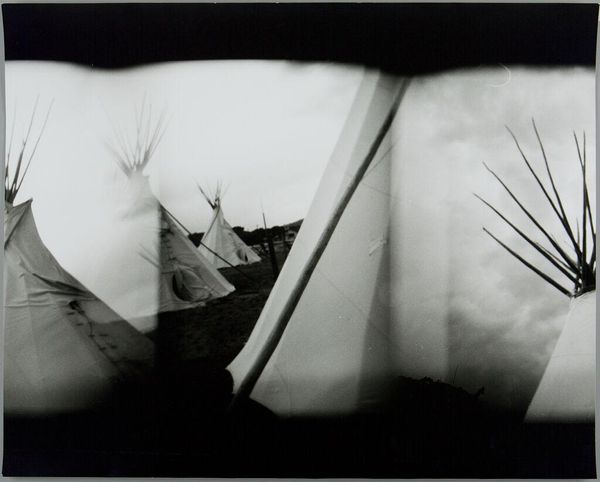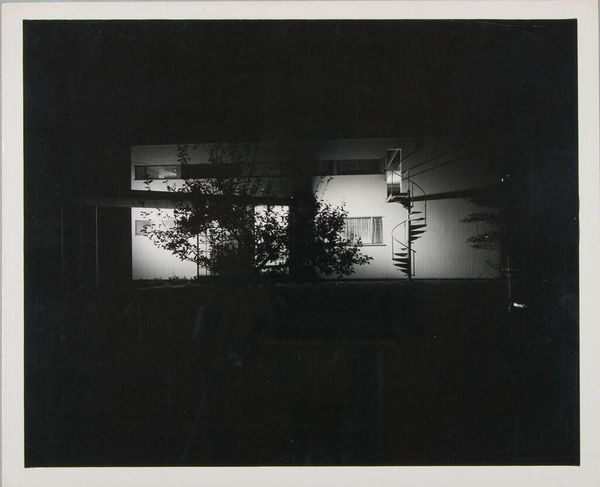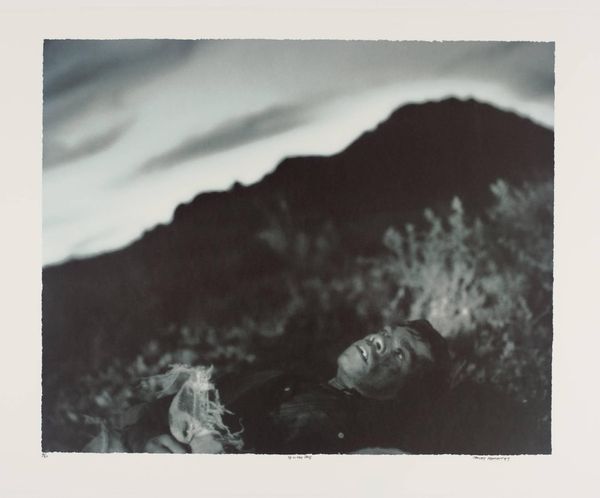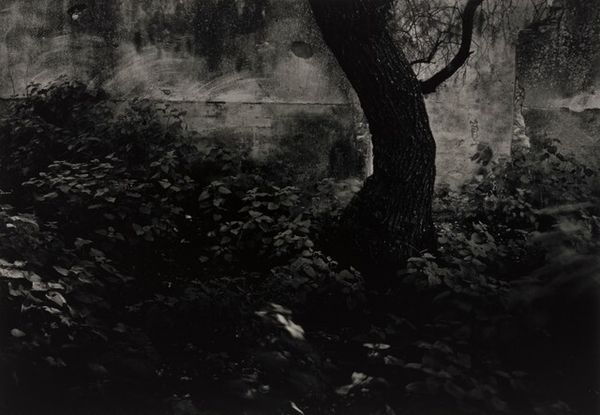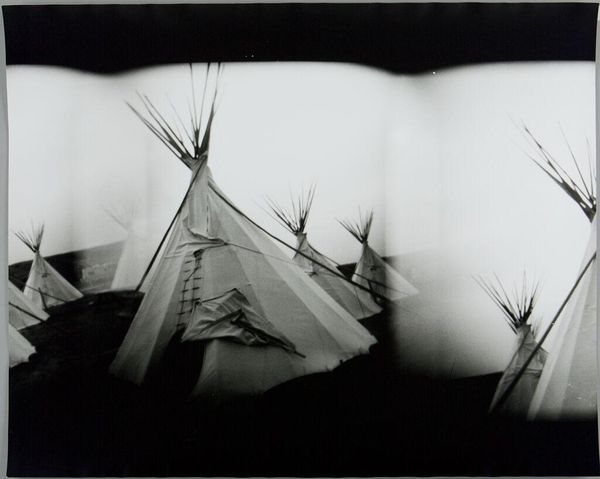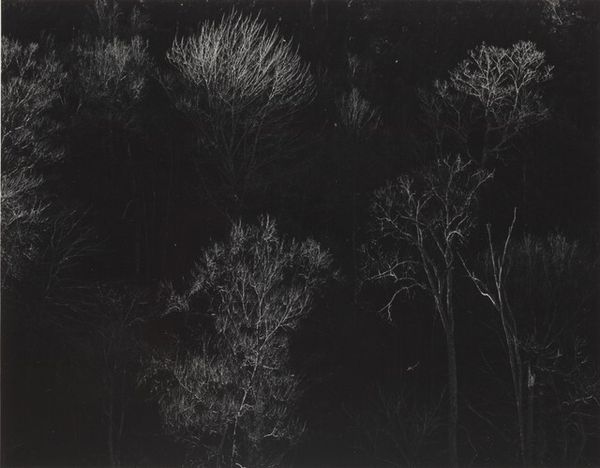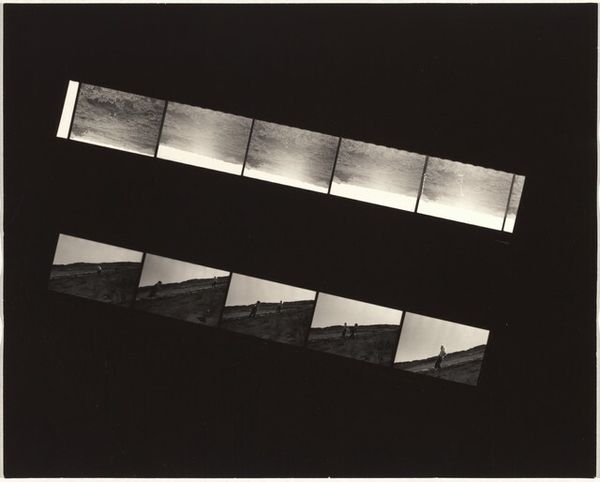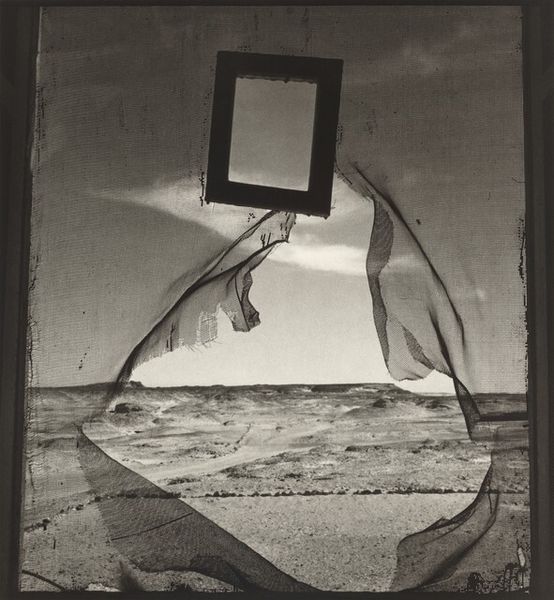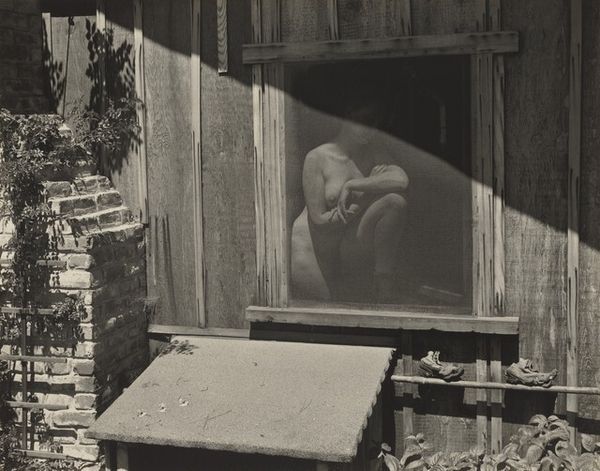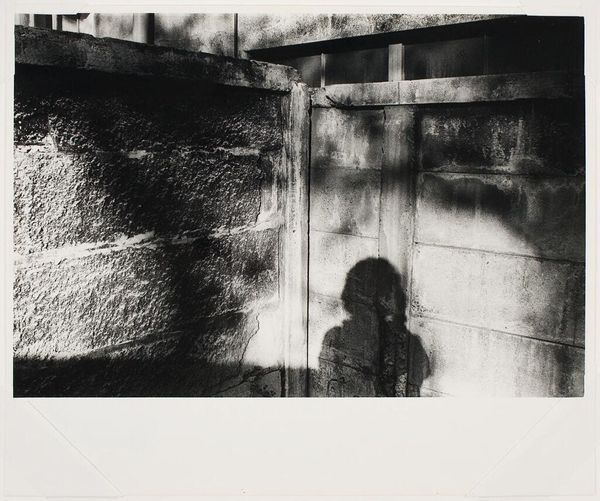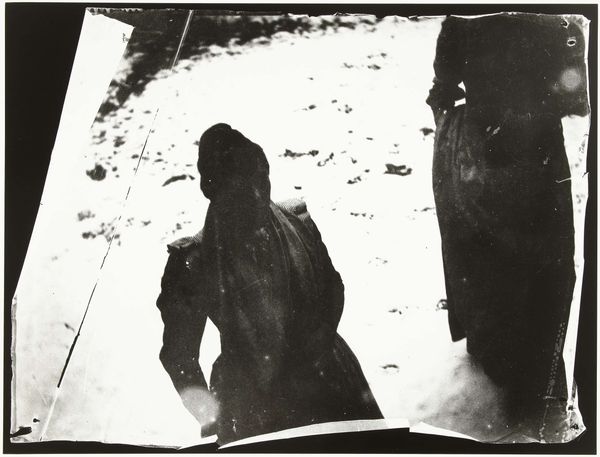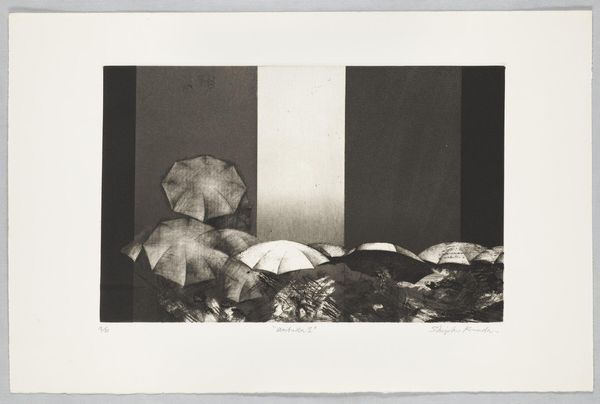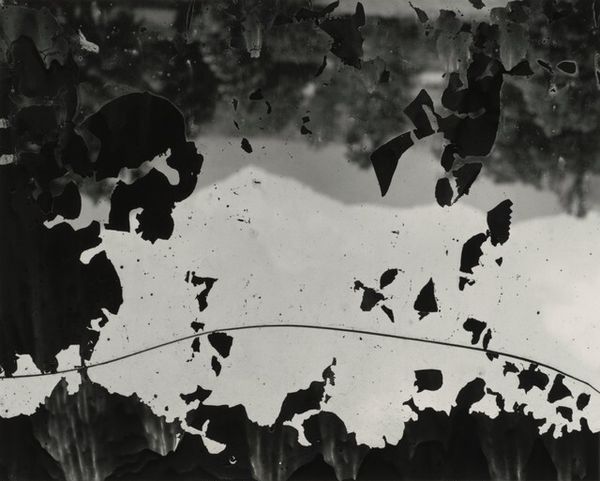
Erinnerungsspur--Statische Vibration (Memory's Trace--Static Vibration) Possibly 1978 - 1979
0:00
0:00
#
black and white photography
#
black and white format
#
warm monochrome
#
dark monochromatic
#
dark shape
#
black and white
#
monochrome photography
#
gloomy
#
monochrome
#
shadow overcast
Dimensions: image: 39.3 x 29.3 cm (15 1/2 x 11 9/16 in.) sheet: 40.5 x 30.7 cm (15 15/16 x 12 1/16 in.)
Copyright: National Gallery of Art: CC0 1.0
Editor: We are looking at Dieter Appelt's "Erinnerungsspur--Statische Vibration (Memory's Trace--Static Vibration)," possibly created between 1978 and 1979. It's a monochromatic photograph, seemingly depicting ghostly figures behind screens set up in a field. The overall impression is quite unsettling; it’s hard to immediately grasp what I'm seeing. How do you interpret this work? Curator: Appelt’s work, particularly in this period, is deeply concerned with memory, history, and the way photographic processes can both reveal and obscure. Considering its post-war German context, we see a lot of artists grappling with national identity and the burden of the past. Do you notice how the images are presented *behind* these rough-hewn frames? Editor: Yes, they are almost like scrims or makeshift stages. They feel temporary and vulnerable. Curator: Precisely! These frames are significant. Think about what they are doing visually and conceptually. Appelt, along with many artists in the '70s and '80s, challenged traditional photographic presentation. By placing the figures *behind* the frames, is he perhaps alluding to the construction of memory, the mediation of history, the way these narratives are always framed, never fully accessible? Editor: So, the “static vibration” in the title refers to the tension between revealing and concealing traumatic memories, almost like they're trying to break through a barrier? Curator: Exactly! And also how photographic processes can both freeze and agitate history. How can we see beyond how they are presented to us? Appelt encourages a questioning look at these historical lenses. Editor: I never thought about photography having a similar power of selective memory as official narratives and historical presentation. This work really challenges the neutrality I often ascribe to the photographic medium. Curator: Indeed. Appelt makes us confront the loaded nature of images and their social implications. It really makes one think of images in terms of power.
Comments
No comments
Be the first to comment and join the conversation on the ultimate creative platform.
